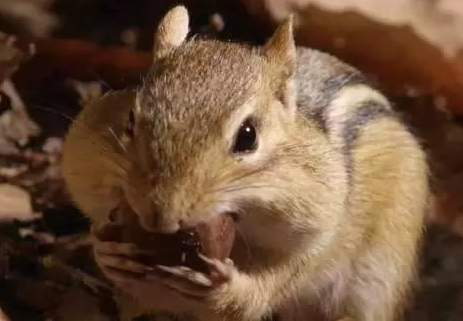We humans sometimes use a memory technique called chunking. For example, with phone numbers we usually remember the three-digit chunk and the four-digit chunk. Two items instead of seven.
我们人类有时会采用一种叫做“分块记忆”的方法来记住某些东西。比如记电话号码,我们通常会三位三位或者四位四位的去记。把七个数分成两段来。
"Well, the way I think about chunking is it's any shortcutting strategy or mnemonic device that would allow an animal, be it human or otherwise, to increase their memory capacity and improve recall." Mikel Delgado, an animal behaviorist now at U.C. Davis.
米克尔·德尔加多是加州大学戴维斯分校的一名动物行为学家。他表示:“我认为分块记忆是一种记忆捷径或者说是帮助记忆的策略,这种方法可以让动物和人类增加记忆的容量,并能提高记忆的能力。”
"And so in the case of the research I was doing in this study, I wanted to know if squirrels would basically arrange their nuts in a way that might facilitate either recall of the location or recaching and redistribution of those nuts later, making it more convenient for them to remember where nuts were stored—because they stored nuts of a similar type or value in similar locations spatially."
“我通过做研究,想验证一下,松鼠是否会按照某种方法来收藏坚果类东西,这种方法有助于它们回忆起坚果放在哪里或者对坚果进行分配或再分配,这有利于松鼠记忆坚果放的位置--因为松鼠将相似类型或者相似价值的坚果存储在差不多的位置。”
Delgado looked for this spatial chunking among 45 fox squirrels on the campus of U.C. Berkeley.
在加州大学伯克利分校,德尔加多尝试在45只黑松鼠中探寻这种“空间分块”。

"So we gave each squirrel 16 nuts…four each of four different types…so the types were almonds, hazelnuts, walnuts and pecans."
“我们给每只松鼠16个坚果……每四个坚果为一种类型……坚果的类型分别是杏仁、榛子、核桃和胡桃。”
"And so we'd give the squirrel the first nut, they'd go bury it. We would follow them from a distance until they had finished caching, or burying it. We recorded the GPS location where they'd buried the nut. And then we lured them back to the original location where they received the first nut to give them the second nut. And so we did that every single time."
“我们给松鼠第一个坚果后,它们会埋起来。我们会远远地跟踪直到它不再跑,或者将坚果埋起来。我们记录了松鼠埋藏坚果的位置。之后,我们将松鼠引到给它们第一个坚果的位置,并给它们第二个坚果,之后我们每一次都这样做。”
"And so the other location condition was basically a lot faster and easier where we gave the squirrel the first nut, they buried it, and then we gave them the second nut right where they buried the first one."
“另外一种定位条件非常简单快捷,我们给松鼠第一个坚果,埋掉坚果以后,我们就在它埋第一个坚果的位置那里给它们第二个坚果。”
And when the squirrels got all their nuts from a central location, they spatially chunked them: "So they would actually cache nuts that were the same species in distinct areas from nuts of a different species…so the take home message I think for me is really that just like physical traits have evolved, I believe that cognitive traits have evolved as well. And a memory process that's very common in humans, this chunking, is a strategy that works for other species."
当松鼠获得所有坚果时,它们已经对这些坚果进行了分块的记忆:“松鼠会将同种类型的坚果和不同类型的坚果放在不同的地方。所以我觉得,就像身体特征的进化过程一样,松鼠的认知特征也跟着进化了。分块记忆--这种人类很常见的记忆策略,对其他物种也是适用的。”
The study is in the journal Royal Society Open Science.
该研究结果发表在《皇家协会开放科学》杂志上。













